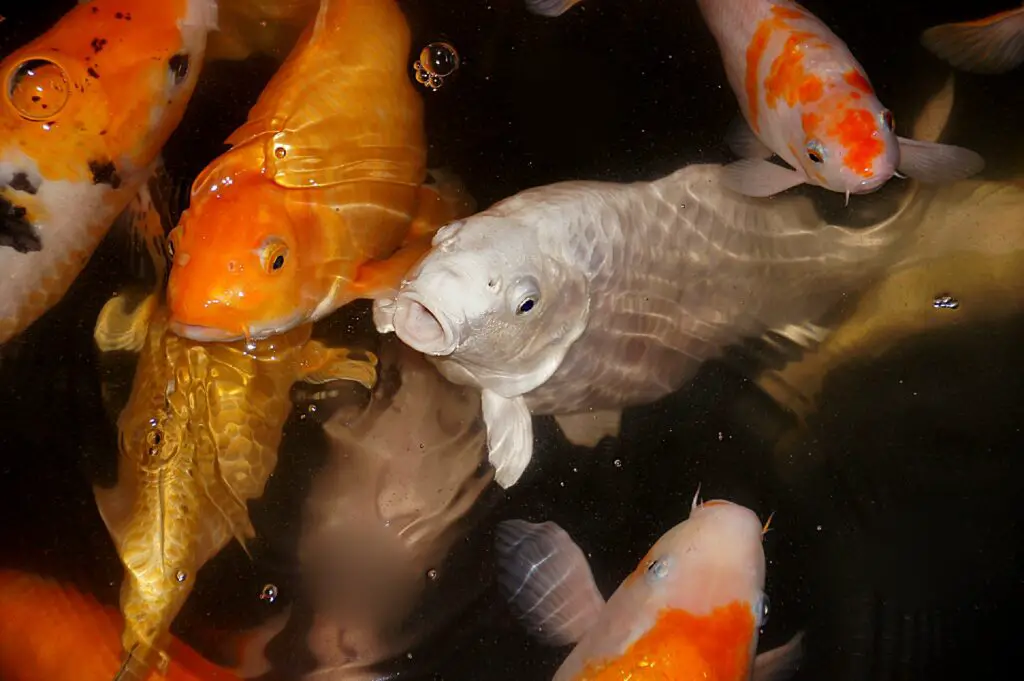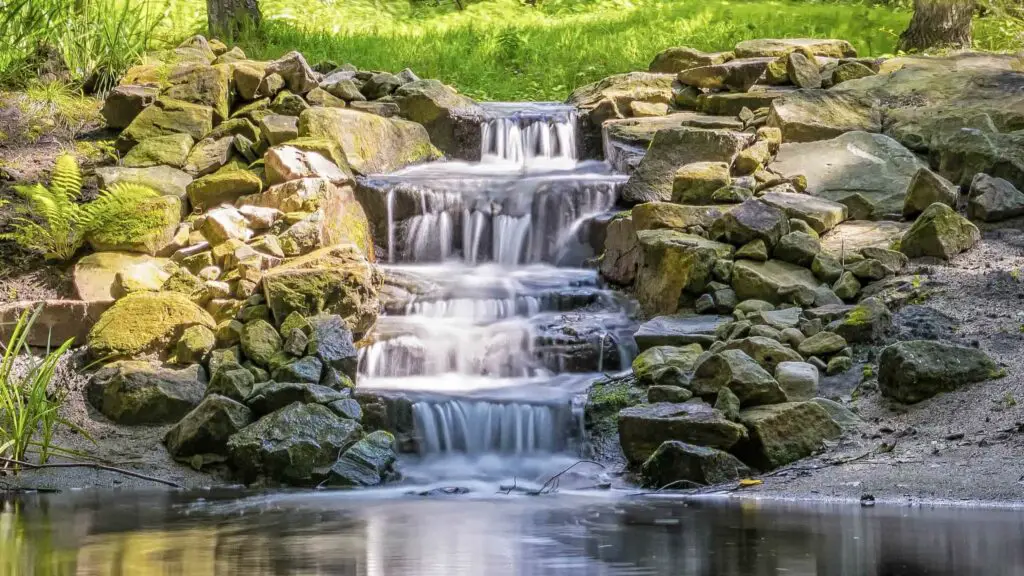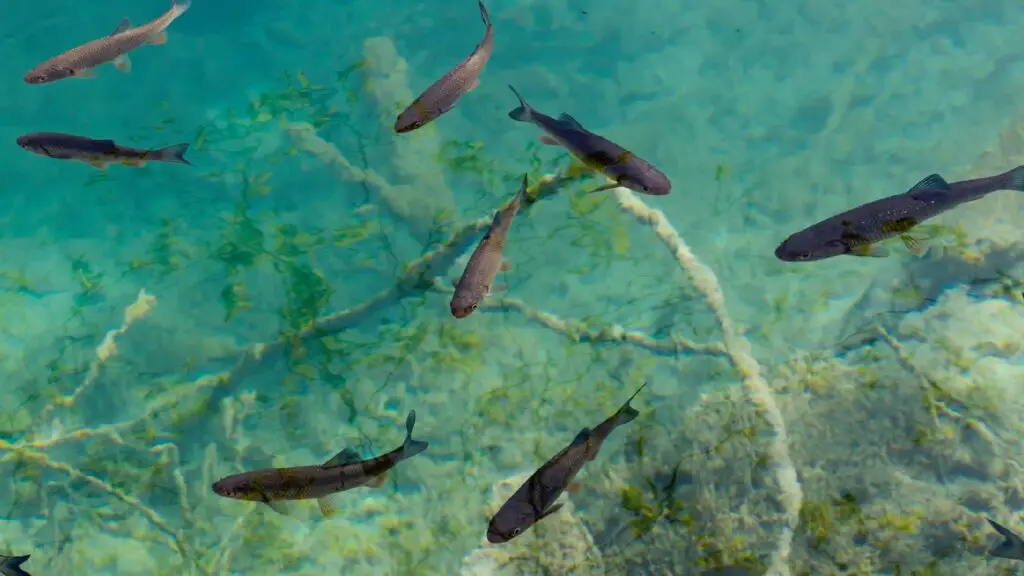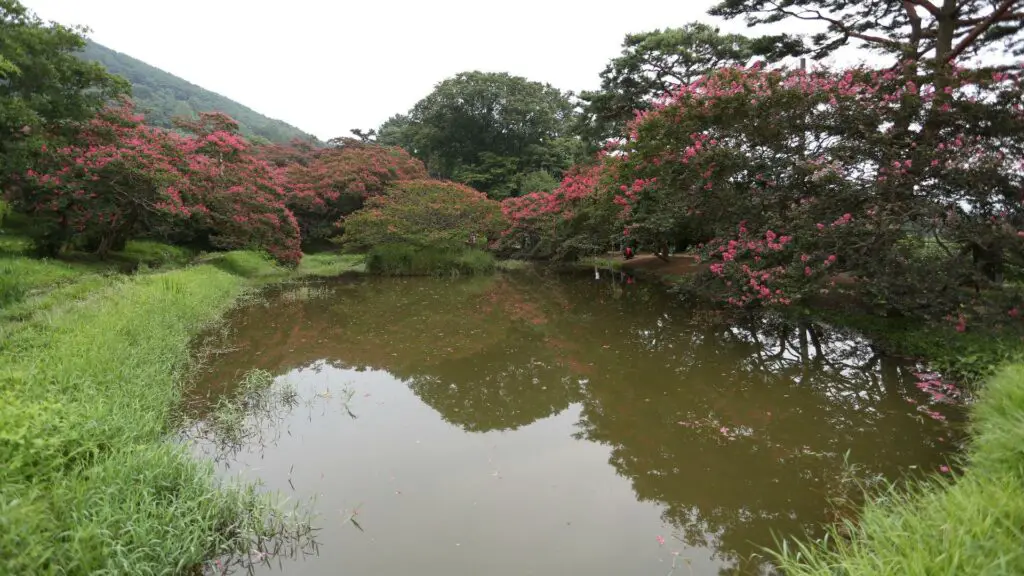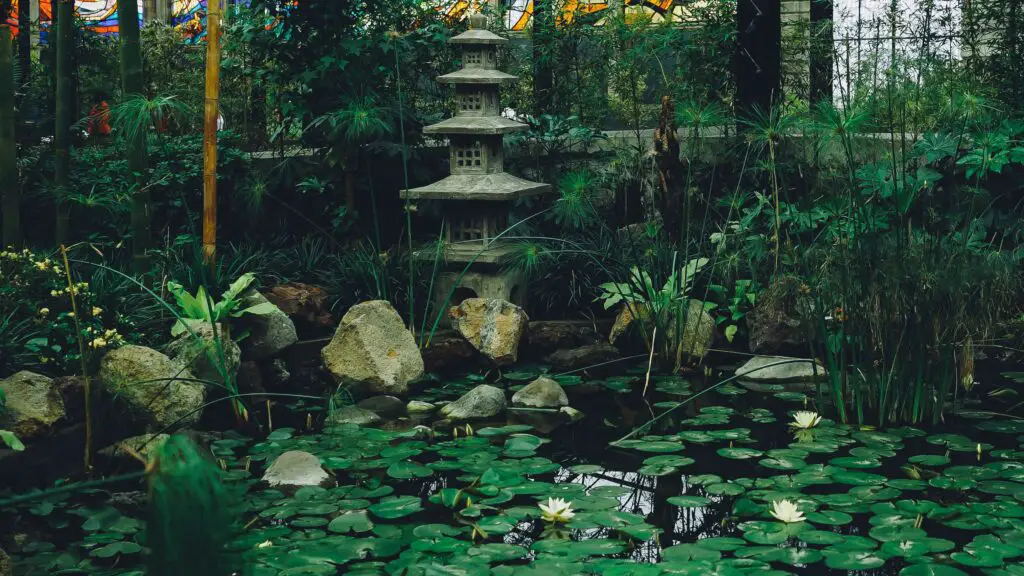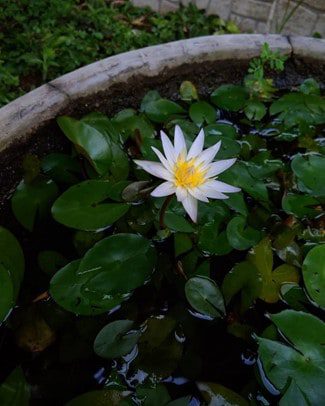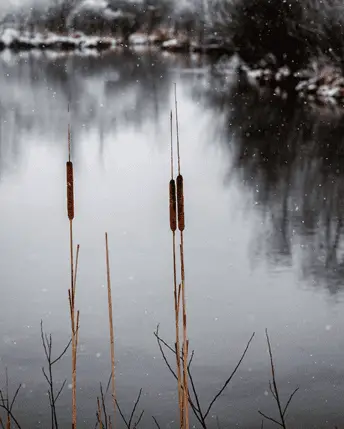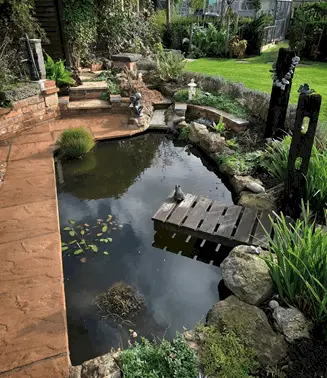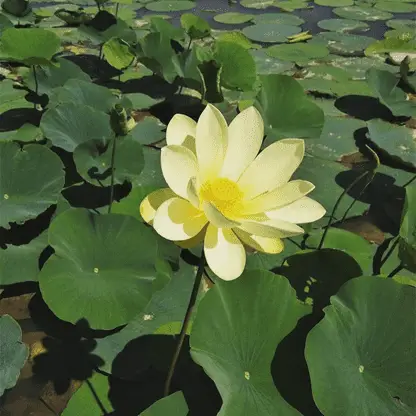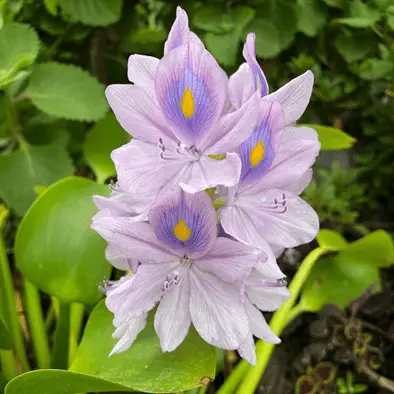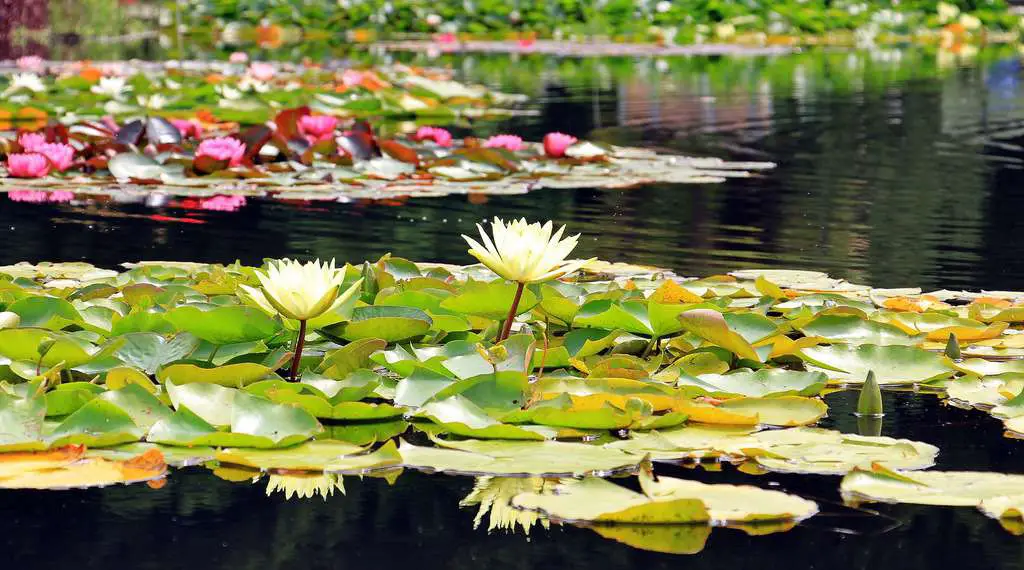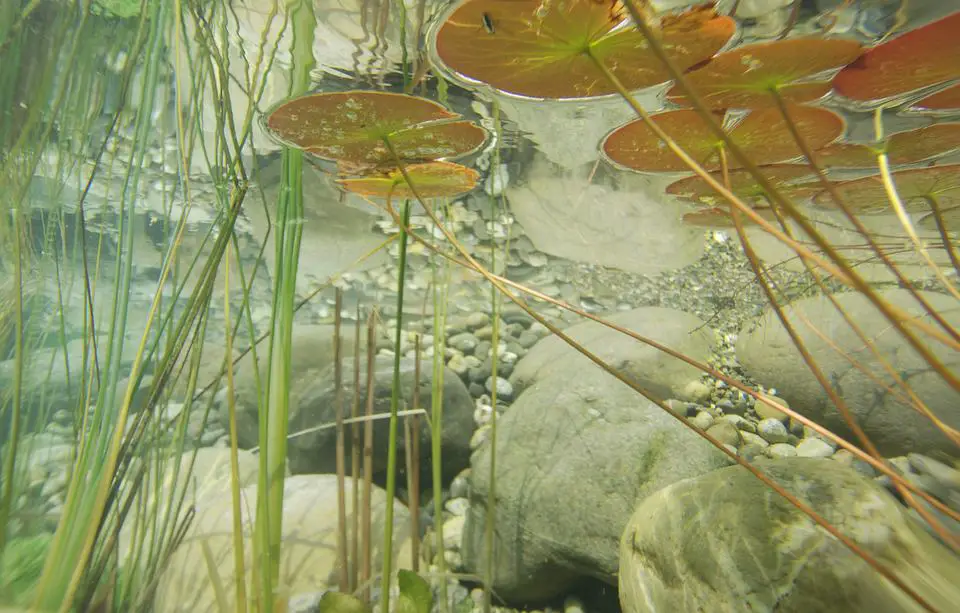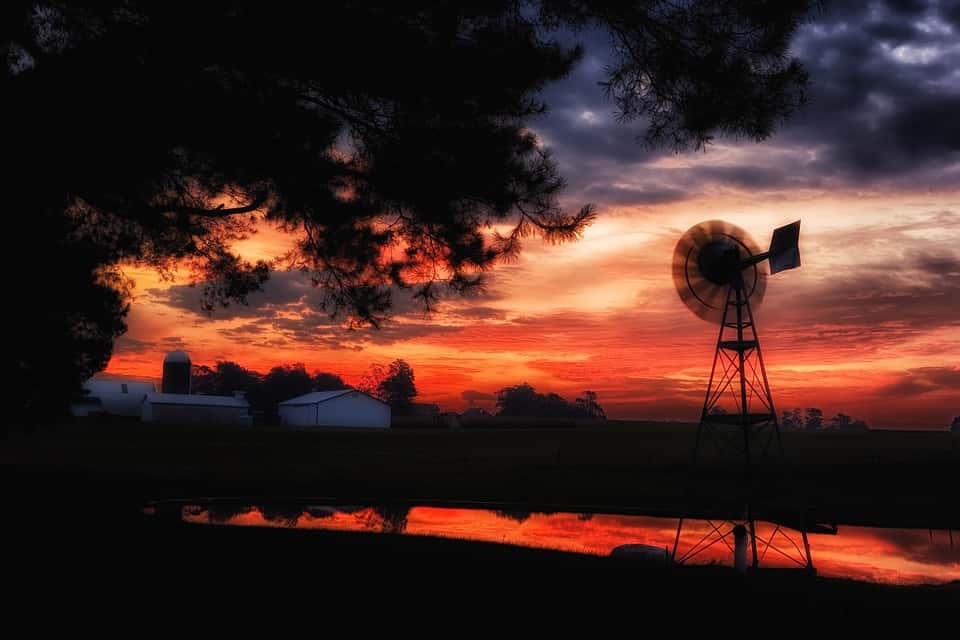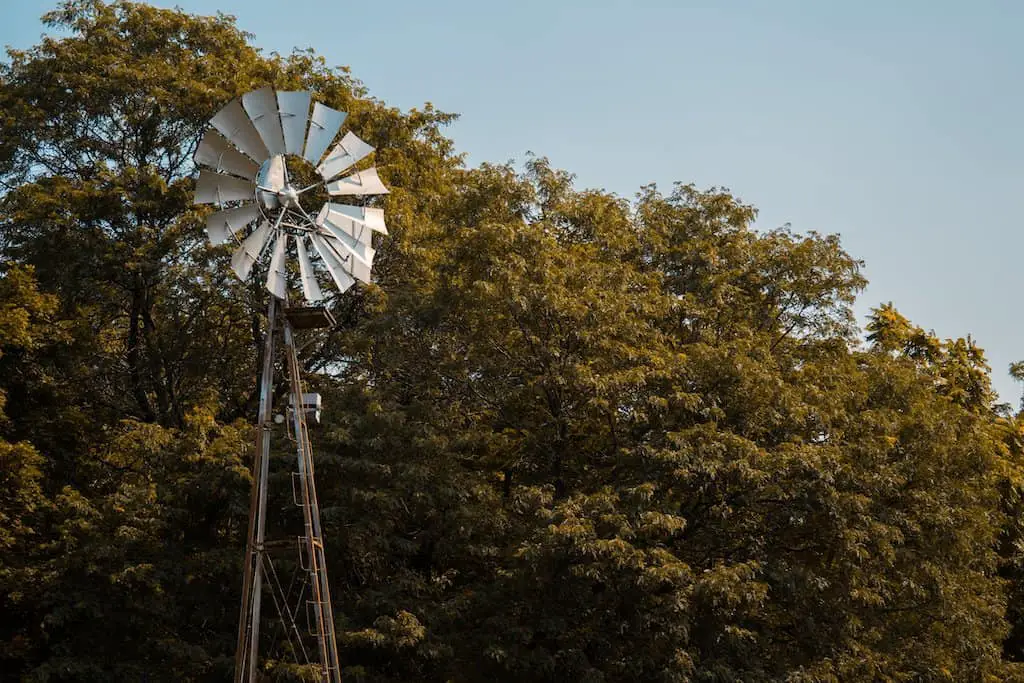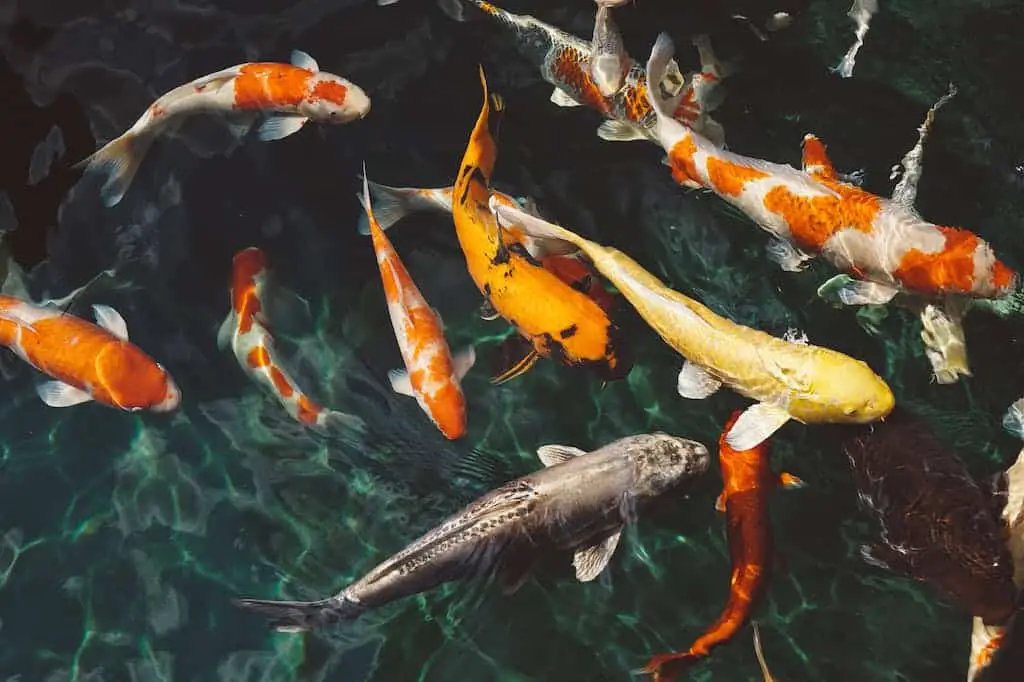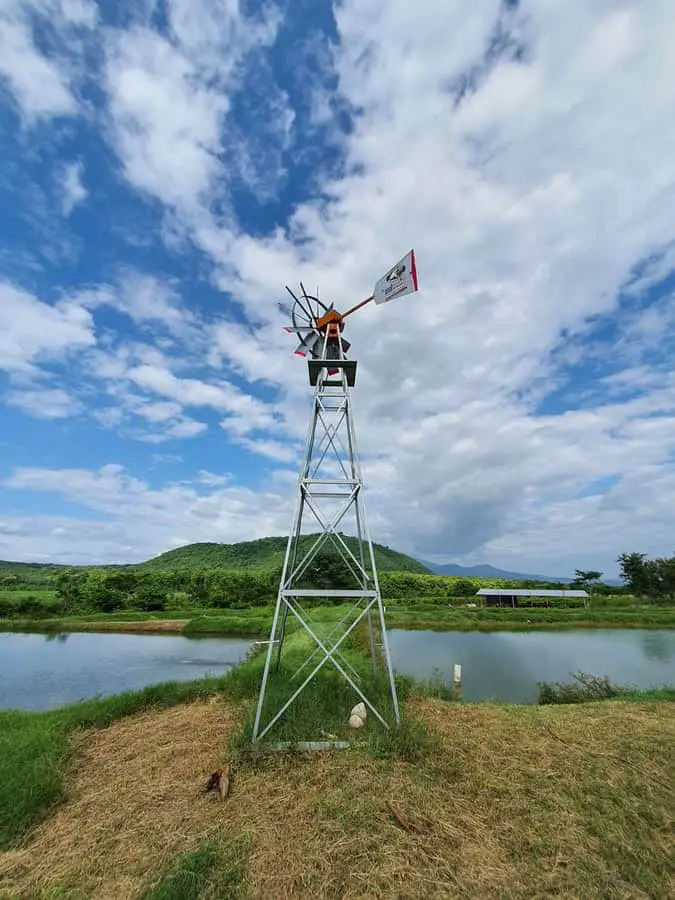If you are going to own fish, whether, in your garden pond or an aquarium, you should really know a few things about fish health. You can surely hire someone to clean your garden pond or maintain your aquarium, but it will pay to learn about the fundamentals of fish health management. The fact that you are still reading this article would indicate to me that you might just have a few fishy friends.
Now, if you’re wondering, “Does this guide apply to recirculating aquaculture systems, as well?” Yes, it does! The majority of the information I’ll share here can also be used in maintaining edible fish species, but to be clear, I will be focusing on koi and goldfish instead of most commercially farmed fish species like catfish or tilapia.
What is Fish Health Management?
Fish health management encompasses different practices meant to prevent various fish diseases. This is essential to large commercial fish farming industries and maintaining fish health in garden ponds and aquariums.
Three of the most critical areas of fish health management are water quality, fish nutrition, and sanitation. These are the common sources of fish stress that should be controlled to maintain a thriving pond or tank setup. The following section takes a closer look at these three areas.
Fundamentals of Fish Health Management
The fundamentals of fish health management mainly focus on prevention. This idea is that it is better to avoid certain conditions that could lead to fish diseases than deal with the repercussions later on.
1. Water Quality Management
Providing a healthy environment for your koi and goldfish begins by giving them quality water to live in. In an indoor aquarium, you will likely want to monitor temperature, dissolved oxygen levels, pH, general hardiness, alkalinity, ammonia, nitrate, nitrite, chlorine, and chloramine levels, while a well-balanced ecosystem pond should take care of all of these levels for you.
It is important to remember that the further we stray from nature, the harder we make things for ourselves and our fish. The fish are very far removed from their natural environment in an aquarium, so we need to monitor things closely. In a naturally balanced pond, mother nature does all of the heavy lifting, and we just need to be careful not to upset the balance too much.
Below is a detailed discussion on monitoring each aspect according to the needs of your koi and goldfish:
Temperature
Your pond or aquarium’s water temperature is crucial to the health of your fish. The hotter the water, the more the toxicity may increase and the less oxygen it will hold. Because they are cold-blooded, fish’s metabolism is directly tied to water temperature.
The ideal water temperature of a goldfish or koi pond is between 59° and 77° Fahrenheit, but the temperatures can stray far outside these guidelines with adequate aeration. Goldfish and koi can withstand very hot and cold water, but they cannot withstand quick temperature changes. This is why when moving any fish from one body of water to the next, we need to ensure that the temperatures closely match. Whenever I move fish from one pond to another or from our fish holding tanks to a pond, I check the temperature of the water with my hand. If I can’t tell the difference between the water temperatures with my hand, the goldfish and koi will be fine with the temperature.
Meanwhile, most experts suggest keeping your koi at 65° and 75° Fahrenheit for aquarium environments.
Dissolved Oxygen
Oxygen levels in a pond or aquarium significantly impact fish health. As stated before, hotter water holds less oxygen, while cooler water holds more.
Depleted dissolved oxygen (DO) is one of the major causes of fish kills in aquariums and ponds. Some of the primary sources of low DO are atmospheric conditions, high water temperatures, harmful algal blooms, chemical treatments, stratification, and pond turnover.
Bottom aeration systems can be installed to supplement the amount of DO in your pond or aquarium. These systems have an air pump that pumps air through tubing to the bottom of the body of water, where the air is pushed through an air stone or diaphragm diffuser causing many tiny bubbles which rise to the surface of the water. This process adds oxygen to the water and circulates the water.
Another way to increase oxygen levels in your pond is to install a waterfall or a fountain pump. Any time that water is falling and splashing, it introduces more oxygen into the water.
For koi and goldfish, the minimum oxygen level required is 6.0 mg/L. However, a higher concentration facilitates healthy growth, reproduction, and tissue repair.
pH
One thing you should monitor in your aquarium is the pH or the level of acidity of water. If you’re not familiar with pH, it has a 0-14 scale, with one as the most acidic and 14 as the most alkaline.
To keep your koi and goldfish in good shape, ensure that your water has a stable pH between 7.0 and 8.6. Anything under or over the range may be detrimental to your pet fish.
Specifically, pond or aquarium water with a pH higher than 8.6 may lead to Alkalosis, a condition that occurs when water is too basic for the fish to tolerate. Likewise, any pH lower than 7.0, which leans toward acidity, may result in Acidosis. In worst-case scenarios, both Alkalosis and Acidosis may lead to fish kill.
I have been keeping koi and goldfish ponds for many years, and I have not found a need to monitor the pH levels of pond water. I maintain many ponds, and the fish do just fine. This is another case of nature taking care of the balance.
General Hardness
Different minerals are found in water, such as calcium, magnesium, borate, iron, and silica. General hardness or water hardness is used to describe the concentration of this mineral content in water.
The rule among fish enthusiasts is that the harder the water, the better fish health. Usually, this hardness comes from calcium and magnesium.
Unlike the pH level, water hardness is not that critical. However, it is best to keep it to a 60 to 160 ppm range.
I do not monitor hardness in any of our Wisconsin ponds and have never had an issue.
Alkalinity
Another thing you should monitor, especially concerning pH, is alkalinity or also referred to as carbonate hardness (KH). It determines the amount of carbonates (CO3) and bicarbonates (HCO3) in your aquarium water.
Why is KH important? Simple, KH protects the water’s pH level from fluctuations. Having a high KH level is beneficial because it neutralizes acid, affecting pH levels.
Keeping your KH at around 105 ppm is best to avoid pH fluctuations and stabilize its pH level.
We do not monitor KH in any of our ponds.
Ammonia
Ammonia is one pollutant to look out for as it is toxic for your koi and goldfish. There are different sources of ammonia in ponds, the primary source being your fish, as they naturally excrete ammonia when they breathe, urinate, and defecate. Debris, such as uneaten fish food, also creates ammonia. A pond with poor circulation and filtration that is heavily loaded with fish can certainly develop high ammonia levels. But, with average fish loads, good circulation, and plenty of plants, this is never a problem in our naturally balanced ponds.
This substance is potent as even a little bit may cause so much damage to any fish. When left unaddressed, ammonia can burn your fish’s gills, preventing it from getting dissolved oxygen from the water.
Ideally, it is best to have no ammonia, so maintenance of water quality is critical. If your ammonia level already reaches 0.25 ppm, know that it’s a cause for alarm, and you should take the necessary steps to address the problem.
Nitrite and Nitrate
Nitrites and nitrates are closely associated with ammonia and are equally significant in your pond’s ecosystem. Good bacteria turn ammonia into nitrites which are then converted into nitrates. One benefit of having plants in your pond environment is that they eliminate nitrates.
An abundance of nitrites can result in fish kidney and nervous system problems. Similarly, too many nitrates can lead to immune system problems.
A reading of 20 to 60 ppm is okay for nitrates, while nitrites should be less than 0.25 and, if possible, go down to zero.
In a naturally balanced ecosystem pond, you won’t have this problem either, since nature’s balance takes care of any levels that get out of balance.
Chlorine and Chloramine
Chlorine and chloramine are very harmful substances that can lead to fish kill, and they do so by damaging gills and scales, which later leads to breathing difficulties. This is why it’s essential to always use chlorine and chloramine remover whenever you add city water to your pond.
Both of these chemicals are used in treating our drinking water as these two eliminate bacteria, parasites, and bad odor, making water potable. While water with a certain amount of chlorine is safe for humans, it is most definitely not for fish. Aside from damaging the insides of your fish, chlorine gets rid of bacteria, including the good ones that reduce ammonia and nitrites. If you are lucky enough to get your water from a natural well that is not chemically treated, then you don’t need to worry about these chemicals.
One fact about chlorine is that it can evaporate. On the other hand, chloramine is harder to deal with as it is a mix of chlorine and ammonia. As I mentioned earlier, ammonia is definitely something you wish to avoid in fish ponds. The ideal level of chlorine and chloramine in pond water is none or 0.00 ppm as these do no good at all.
Algae
Algae is a natural part of all ecosystem ponds, but we can get extreme algae blooms when things get way out of balance. These will typically occur when we get a rich nutrient source entering our ponds, such as chemical fertilizers or animal manures. In these cases, ponds can be overloaded, and low oxygen levels can result.
While it is possible to have low oxygen levels with extreme algae coverage, fish kills are most common when people try to kill the algae with chemical treatments. Killing large quantities of plants of any sort in a pond will cause oxygen levels to crash and can easily result in fish kills.
2. Fish Nutrition
The nutrition you provide to your koi and goldfish is almost as important as water quality. Both species are omnivorous, so they eat whatever is given to them.
There are three types of food when it comes to fish feeding:
- Natural food includes creatures naturally found in ponds such as bacteria, plankton, insects, fish, and aquatic plants.
- Supplementary feeds are relatively cheap items such as kitchen waste, terrestrial plants, and agricultural byproducts.
- Complete feeds are usually packed with nutrients and are easy for fish to eat and digest.
In a natural pond setting, koi and goldfish eat algae and can survive without supplemental feeding. On the other hand, if they are placed in a more controlled environment, you may have to give them the nutrition they need because of the lack of natural food. I always tell people that if they have their pond and fish to have a really clean pond, then don’t feed the fish. On the other hand, if the reason for the pond is to raise big, colorful fish, then feed them because they will grow more quickly and be more colorful.
As they feed on animal and plant products, you can also explore giving them food other than processed feeds. Insects, small fish, and other aquatic animals can be added to their diet, giving them the illusion of a natural setting. Among these are worms like silkworms, earthworms, mealworms, shrimp, tadpoles, and larvae of wax moths and mosquitoes.
Fruits and vegetables are also good sources of vitamins and fiber. Lettuce, watermelon, oranges, broccoli, carrots, pineapple, and apples are just a few of the many natural foods they will eat.
3. Sanitation
Just like humans, fish need a clean environment to be able to thrive. From my experience, an aquarium needs regular cleaning and water changes simply because it’s a clear plastic or glass box inside the home. On the other hand, Ponds can be almost maintenance-free if built correctly with wet well intakes and wetland filters.
Giving your pond the proper circulation, filtration, bacteria, and plants will be all that is needed for a very easy care pond.
Even with a well-balanced, natural pond, we should monitor the pond bottom to ensure that large accumulations of debris are eliminated as needed. With good balance, these debris piles will be minimal, but in yards with heavy tree cover, the pond water will collect more leaves than it can naturally digest, so some manual leaf removal will be necessary.
Fish Diseases
1. Causes of Koi and Goldfish Diseases
Koi and goldfish are not insusceptible to diseases. In fact, there are diseases these species commonly face, which every pond owner should know.
Awareness and knowledge of these health risks will help owners address them early on. The saying prevention is better than cure rings true, and preventing these issues is easier than remedying them later.
Pond owners should watch for several common causes of koi and goldfish diseases.
Improper Feeding
Diet is of utmost importance when caring for your koi and goldfish. Improper feeding, which covers not giving the proper diet and overfeeding, is one common cause of health problems.
Nutritional diseases arise when your fish does not receive the dietary requirements for optimum health. In selecting food that you give your pet fish, you should consider the nutrients it offers to ensure that nutritional needs are met.
Aside from the quality of food, one thing to consider is feeding frequency. While watching your koi and goldfish eat is enjoyable, you should be careful not to overfeed. It is more common for owners to overfeed their fish than underfeed.
How often should you feed your koi and goldfish? The rule of thumb among koi and goldfish enthusiasts is to feed only once a day.
Your next question would probably be: how much should I feed my koi and goldfish? This can be tricky as there is no one-size-fits-all solution in fish feeding. In general, the fish should quickly eat any food that hits the water. If you toss food onto the water and some remains, your fish are definitely overfed.
Never feed your fish when the water temperature drops below 50 degrees Fahrenheit. At this temperature, their metabolism slows, and this can cause food to go undigested and rot in their bellies.
Stress
When subjected to stress, fish can experience a decline in health. If you notice listlessness in your koi and goldfish, you may have overlooked some conditions that have caused this stress.
Different situations can trigger stress, such as rough handling, predators, and overcrowding in the pond are some of the most common causes in a naturally balanced pond.
Attack by Disease Organisms
External factors such as disease organisms also cause illnesses among fish. These organisms attack fish externally or internally, and external problems affect skin, gills, or fins, while internal problems affect the blood, nervous system, digestive tract, and the like.
Living organisms that pose health risks may be classified into three: viruses, bacteria, and parasites. Both viruses and bacteria are not visible to the naked eye and can be detected through tests and laboratory techniques.
Parasites, to some extent, can be seen and may be present inside or outside of the body. Organisms that dwell in the body of your fish include sucking worms and tapeworms, to name a few. Meanwhile, leeches, flukes, fish lice, water fungi, protozoa, and copepods live outside the body or just within the pond environment.
Luckily, with proper treatment and early detection, you can remedy the diseases caused by these organisms.
2. Areas to Analyze for Fish Diseases
Think something is wrong with your koi and goldfish? This checklist will guide you in determining if your fish is experiencing a health issue. By knowing which areas to check, you can narrow down possible problems your fish may face.
Waste/Feces
Fish waste is among the things you should check to know what is wrong with your koi and goldfish. The normal waste of koi and goldfish is brown and would sink to the bottom and dissolve. If it is gelatinous in consistency and floats, there may be an issue in your fish’s digestive system.
One problem that manifests in feces or waste is your fish’s diet. Double-check the quality and kind of food you give your koi and goldfish. Further, you can check for debris that may have fallen into the pond that caused this.
Physical Body
You can often see physical signs of disease on your fish.
Some alarming issues are the presence of opaque mucus on the body, wormhole-like things on the scales, and tiny parasites. Having a microscope at home will come in handy because you get to see minuscule features and organisms.
Take a look at your fish’s scales to see if there are noticeable differences from the usual. Red spots or congestion on the gills, skin, and mouth are also signs of health issues such as bleeding.
After a visual check, use your sense of touch for further findings. Feel your pet fish’s body and note if it is slippery as it naturally should be. Dryness can be a symptom of diseases such as gyrodactylus and chilodonella.
Take note of any unusual findings in the eyes, abdomen, gills, and other parts.
The eyes are the windows to the soul, but they also tell you if there is a problem. Check if the eyes are popping out or sunken in, look clouded, or seem like they are rotting.
For the abdomen, see if parts look swollen or bloated. Also, look for redness around the mouth or gills, as this may be a tell-tale sign of breathing difficulties. Aside from redness, check mucus or secretions around the gills that are white, grey, or yellowish. Note that when breathing, the gills of a healthy fish will have an open-and-close pattern and be deep pink in color and not pale or white.
Death Patterns
For the most part, in a well-balanced outdoor pond, we don’t see much of any of the above-listed illnesses. I can tell you that when we sold fish and held them in properly circulated indoor tanks, the number of sick fish made it very difficult.
In our natural outdoor ponds, the fish are at risk from predators such as the Great Blue Heron and Mink, but not so much from disease.
We will lose some fish over winter. Here in Wisconsin, we keep bottom aerators running over the winter months, and our ponds are frozen over with ice from December through March. We do typically see a few dead fish in spring, but it is not clear why they died.
I can say that here in Wisconsin; I have seen situations where fish begin to die several weeks after the ice melts. I think this is because the pond owner has not yet started the pond filtration and circulation system, and maybe the water is too still? We always recommend getting the pond running as soon as possible, and if not possible, we would recommend a partial water change to get the fish some new freshwater. If you are doing a partial water change, make sure to add a dechlorinator if you are on city water.
It is unfortunate when one of your pet fish dies and all the more when you lose more than one. If death should occur, you should take note of the details and circumstances which may help you prevent further damage to your pond.
A common cause of fish disease in our natural ponds is the addition of new fish from a fish retailer. Any time you introduce new fish into your pond, you risk introducing disease. Always remember to do proper quarantine. Keep your koi or goldfish in an isolated or separate tank or pond for two to six weeks. This will give you time to spot bacterial or parasite infections that are both common causes of illness and, eventually, fish kill. By doing so, you are protecting your existing pond.
Another cause of fish kill is the ingestion of poisonous substances. Suspicious debris floating or at the bottom of the pond, strong-smelling chemicals, and other unnatural substances are signs to look out for as these may have led to the poisoning of your fish. If you hire a pest control company to spray for pests in your yard, these same chemicals can easily kill your fish if they get in the water.
Should you not be able to determine changes or actions done that may have caused the unfortunate death of your koi and goldfish, check and evaluate the bodies of the ones that passed away to find out what went wrong.
3. Common Fish Diseases and Treatment
Knowledge is definitely power. Knowing the diseases that commonly plague koi and goldfish will help you detect problems and find remedies early. In general, your best defense is a well-balanced, healthy pond. While sick fish can be treated with medications, it is very difficult or even impossible to do in a pond. If you see a sick fish in your pond, I suggest removing it immediately and putting it in a separate container. This way, you can easily medicate it if you choose to do so, and it is not getting your other fish sick if the disease is easily passed from fish to fish.
Dropsy
- Causes: Dropsy is a problem that koi and goldfish commonly encounter. There are several known causes for Dropsy. It may be caused by a bacterial infection hitting the kidney or liver with the bloodstream as the route of infection. It may also be brought by the Mitraspora cyprini, a rare fish parasite that hits the kidney.
- Symptoms: Physical signs to look out for that point to Dropsy are raised scales that resemble a pine cone, bulging eyes, fluid retention or body swelling, and loss of balance. Internal symptoms include congenital heart or kidney failure, kidney enlargement, and the loss of function for the organ.
- Treatment: Dropsy isn’t contagious, and treatment is dependent on the nature of the problem. Since there is a wide range of possible causes with similar symptoms, the best action plan is to give varied treatments. There are medications for Dropsy that are antibacterial, antibiotic, and antiparasitic.
Flukes
- Causes: Flukes are parasites among the most common to hit koi and goldfish. These parasites attach themselves to either the body or gills of fish and may hit the entire pond when left unaddressed.
- Symptoms: Tell-tale signs of fluke infestation are flashing where fish scratch themselves against other objects or the bottom of the pond, frayed fins, difficulty breathing or frequent gasping, excessive mucus secretion, and weight loss.
- Treatment: To treat flukes, koi are given Supaverm of Potassium Permanganate, while goldfish are given Praziquantel or Potassium Permanganate. Immediate treatment of the affected fish is vital not to affect others in the same pond.
Fin Rot
- Causes: Much like Dropsy, fin rot is a condition that comes with another underlying problem. When under stress, koi and goldfish become more vulnerable to bacteria, leading to fin rot. Fins start to rot when the immune system is weakened due to poor water quality, disease, fin nipping, temperature change, and overcrowding, among others.
- Symptoms: Aside from apparent rotting of the edges of the fins, fin rot can also have symptoms like fin discoloration, missing fins, inflammation near the fins, and behavior change like hiding and rubbing. If the condition worsens, fins will completely deteriorate up to the body tissue.
- Treatment: Since poor living conditions contribute to fin rot, be sure to test and address problems to bring back water quality. Once the pond water is safe again for your koi and goldfish to live in, you can already start treatment using antibacterial medication.
Gill Rot
- Causes: Gill rot, also known as Columnaris disease, is caused by the Flexibacter columnaris bacteria. Columnaris is a serious and alarming skin and gill disease mainly affecting freshwater fish.
- Symptoms: You will know it is gill rot or Columnaris when there is the presence of white and yellow mucoid patches all over the body. These are usually composed of swarms of the bacterium with a reddish hemorrhagic zone and necrosis surrounding it. The overall appearance makes the fish look like it is covered in white rags.
- Treatment: Antibiotics and certain chemicals are used to treat external infections caused by Columnaris. Copper sulfate, Acriflavine, Furan, and Terramycin are added to water to help cure this condition.
Anchor Worm
- Causes: Contrary to its name, anchor worm is not a specific type of worm but rather the Lernaea copepod crustacean. This typically occurs when new goldfish and koi are added to the pond that have not been quarantined.
- Symptoms: Anchor worms, usually appearing as a short piece of thread hiding beneath a scale, may dwell unnoticed in the newly added fish and affect others. They are typically found in the affected fish’s oral cavity, making its mouth resemble baleen. Those that fall off leave behind patches of hemorrhage or fibrosis.
- Treatment: Because the naked eye can see these string-like organisms, you may want to pull them out. The best action to take is to leave it as it is highly recommended to have it removed by a veterinarian while the fish is sedated. Bacterial infections may develop in the areas where these anchor worms attach, so monitoring is important. This can also be treated with organophosphates or diflubenzuron (dimilin) but with caution.
Fungus
- Causes: Fungus may grow and hit those with a weakened immune system when pond water quality is poor. Fish with existing infections and wounds are more likely to get fungal infections secondary to their condition.
- Symptoms: If you find growths along your pet fish’s body and fins that look like cotton wool, it most likely has a fungal infection. When not treated immediately, fungal infections can lead to fatal results.
- Treatment: Though it is not contagious, it is recommended for pond owners to isolate infected fish while it is being treated. Slowly take out the fungus with a cotton swab and use prescribed fungicide on the affected area. Infected fish should be monitored to avoid further infections. For the pond, improve water quality and at the same time use Methylene Blue to help get rid of the fungus.
Fish Lice
- Causes: Fish lice or Argulus is quite common in koi and goldfish ponds. It may appear as green algae that has stuck itself onto the fish, but a closer look will show that it’s actually a tiny crustacean with a greenish-brown disk-shaped body. You can spot them in the stomach, throat, and bases of fins.
- Symptoms: Fish lice attach to your fish, create tiny holes in the body, and leave red spots. With the fish lice attached, affected fish will try to scrape the organism off. If you notice abnormal activity like this, you may want to check for fish lice. Lethargy or less energy is also a sign, especially if the fish lice has attached itself long enough to make the fish anemic.
- Treatment: Chemical treatment, such as Dimilin, is needed to eliminate fish lice and eggs in your pond. Be sure to read instructions carefully before doing these treatments to avoid harmful effects on your pond ecosystem. There are also recommendations from pond owners to use tweezers in removing fish lice with precaution.
Trichodina
- Causes: Another parasite to look out for in koi and goldfish ponds is trichodina. It is pretty easy to identify this parasite with its wagon wheel-like appearance.
- Symptoms: To know if a trichodina has latched itself to your fish, check if there is a gray film or mucus all over your fish’s body. Breathing problems may arise, especially when its effect has become severe. Other signs to watch out for are lethargy and flashing.
- Treatment: The earlier the treatment of trichodina infection, the faster it will be, especially when it’s still in the early stages. Medication can be Potassium Permanganate or salt dip.
Ulcers
- Causes: As with other bacterial infections, fish with a weak immune system are prone to getting ulcers. Ulcers are also caused by parasites such as flukes and anchor worms, so keeping your pond parasite-free helps prevent ulcers.
- Symptoms: Initially starting as tiny red or white pimple-like spots, ulcers eventually become large holes that, when left untreated, will affect the muscle of your fish.
- Treatment: Fish suffering from ulcers need medicated food to help them recover. Bath treatments of Tricide-Neo, antibiotic injections, and antibiotic ponds are courses of treatment you can take for your fish.
Chilodonella
- Causes: Chilodonella are microscopic parasites that use their fish host as an anchor point in feeding off bacteria and microbes. These parasites stick to gills, especially in their juvenile stages. As these grow, they move to different parts of the skin.
- Symptoms: Cloudy white spots on fish skin, flashing behavior, gasping for air, increased mucus production, clamped fins, and low energy are some signs that tell if your fish has a Chilodonella infection.
- Treatment: One thing to remember in treating parasite and bacterial infections is that improving water quality does wonders in preventing further damage and recurrence. For fish with Chilodonella, isolate it into another tank and give necessary treatment such as a salt bath, salt dip, or Potassium Permanganate.
Costia
- Causes: Very similar to the Chilodonella, Costia is a parasite that needs a microscope to be seen. This parasite attacks fish skin and gills and affects those with existing problems. It dwells more in colder water and is not that harmful unless it grows in large quantities.
- Symptoms: Fish with less appetite and energy, fleshing, and extra slime production may be affected by Costia. Also, expect breathing problems, especially when gills are affected.
- Treatment: Like other infections, keeping your affected fish in quarantine is the first step you should take. This prevents further damage to your pond and controls the situation. Costia may be difficult to treat once it has become widespread. Treatment includes medicated baths for the affected fish.
White Spot Disease
- Causes: White spot disease is a common health problem that fish of different species experience. The sole cause of this problem is the protozoan Ich that sticks itself to fish’s gills. After clinging onto its host for about three weeks, the Ich will release its hold and settle at the bottom of the pond for reproduction.
- Symptoms: You can identify it as white spot disease when there are small white spots on your fish that are the size of coarse sand or salt. However, other symptoms may manifest even before the appearance of white spots. These include lethargy, loss of appetite, and consistent rubbing of oneself against other objects.
- Treatment: It is interesting to note that salt is a known medication for Ich. The salt concentration of the pond or quarantine tank is increased to about 0.5% for 10-21 days. For better and faster results, it is recommended to increase water temperature gradually. Another course of treatment is using malachite green and formalin, which requires caution and works best for short quarantine treatments.
Swim Bladder Disease
- Causes: Swim bladder disease is when the fish cannot regulate its buoyancy. There are two types. First, the Positive Buoyancy Disorder is caused by either a change in diet, parasites, or a shift in the swim bladder. Second, the Negative Buoyancy Disorder is caused by many internal factors such as a rupture or infection.
- Symptoms: You can identify the first type, Positive Buoyancy Disorder, when your fish floats at the top of the pond or on its side. On the other hand, with the Negative Buoyancy Disorder, your fish struggles to get to the top and stays at the bottom instead. This may go unnoticed because fish staying too low is not as noticeable as those that float too high.
- Treatment: Different types and causes require different treatments. For Positive Buoyancy Disorder, if the cause is the diet, one possible remedy is to halt feeding for a couple of days to release excess gas. Surgeries to remove tumors and the like may also happen when advised by the veterinarian. Different plans may arise for the Negative Buoyancy Disorder depending on the diagnosis. While waiting for your veterinarian’s advice, you can help your affected fish by making it comfortable with the pond layout and giving it attention during feeding.
Gold Dust Disease
- Causes: Also referred to as Velvet and Rust, Gold Dust disease is a common condition among freshwater fish caused by Oödinium or Piscinoodinium. There have been debates about whether it is a protozoan or algae because of its chlorophyll component.
- Symptoms: As this is a parasite, infected fish will try to scratch the organism off its body. Other than flashing, symptoms for Gold Dust disease include lethargy, weight loss, labored breathing, clamped fins, and a velvety film of the skin that is either fine yellow or rusty. During its advanced stages, fish skin may start to peel off.
- Treatment: This disease is contagious, so it is essential to remedy it at the soonest possible time. Treatment for Gold Dust disease includes raising the water temperature, dimming lights for several days, adding aquarium salt, and treating the pond with copper sulfate for ten days.
Final Thoughts
Starting a pond or aquarium is no easy task. There are a lot of things to consider. When your tank is unnatural and indoors, you have a much more challenging task as the tank will require you to care for it in the absence of nature. If you create a naturally balanced outdoor pond, most of the hard work is taken care of by nature, including fish health management. As the owner, you must be equipped with the proper knowledge of the fundamentals of caring for your pet fish and know-how on dealing with problems such as diseases that you may encounter later on.
I hope this guide provided you with all you need to know before you start your journey in building your pond or aquarium. Be sure to keep this in your bookmarks tab for when you need a quick reference as you explore the wonderful world of aquatics.

